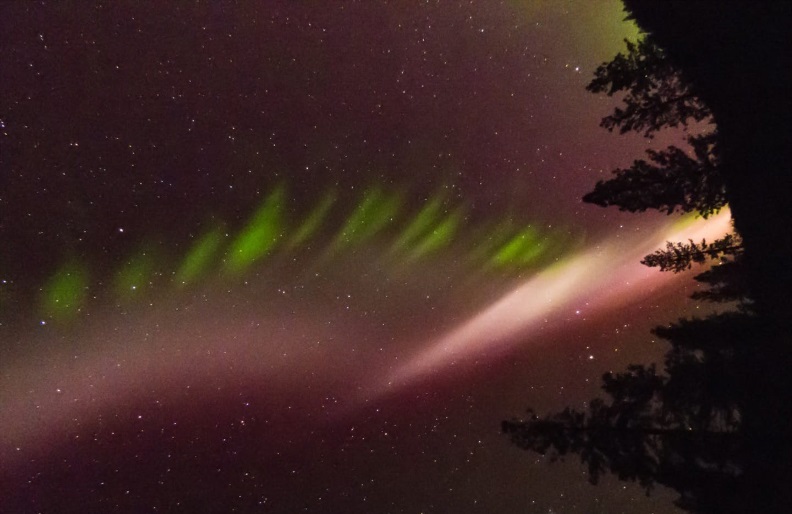It might be hard to believed that a phenomenon as eye-catching as aurora could go undocumented, but in 2016 a new type of sky light was discovered, and given the strange name of STEVE. Exactly how the phenomenon worked was unknown, but a new study has now found some answers.
While it can look a bit like your garden variety aurora, STEVE has been spotted at much lower latitudes, and shines in different colors. Where auroras are mostly green, STEVE is made up of a long thin ribbon of pink, mauve or red light, sometimes accompanied by green streaks likened to a “picket fence.”
Just how similar the two phenomena are has been up for debate, and last year a study found that STEVE doesn’t form in the same way as auroras. How it does form then remained unexplained, until this latest research.
To find out, the researchers analyzed satellite data of STEVE events observed in April 2008 and May 2016 – both of which were before the phenomenon was formally “discovered” – and compared that with measurements of the electric and magnetic fields at those times. These observations were backed up by amateur photos taken from the ground.
The team found that STEVE is both related to and distinct from regular auroras, and interestingly its two different components – the pink ribbons and green picket fences – arise through different mechanisms. Normally, auroras are born when charged particles from solar winds stream into Earth’s upper atmosphere, exciting oxygen and nitrogen atoms and making them glow.
STEVE’s picket fences form in a similar way, explaining why they’re green like most auroras. These shapes are powered by energetic electrons being knocked out of the magnetosphere. That said, they occur much higher up than regular auroras, and can reach both hemispheres at once.
The meat of the show, the pink ribbons, are a different beast altogether. They’re caused by a stream of charged particles in the Earth’s ionosphere colliding with each other, which creates friction and heats them up until they glow. It’s a similar mechanism, the team says, to how incandescent light bulbs work.
“Aurora is defined by particle precipitation, electrons and protons actually falling into our atmosphere, whereas the STEVE atmospheric glow comes from heating without particle precipitation,” says Bea Gallardo-Lacourt, co-author of the study. “The precipitating electrons that cause the green picket fence are thus aurora, though this occurs outside the auroral zone, so it’s indeed unique.”
The research was published in the journal Geophysical Review Letters.
Source: American Geophysical Union
